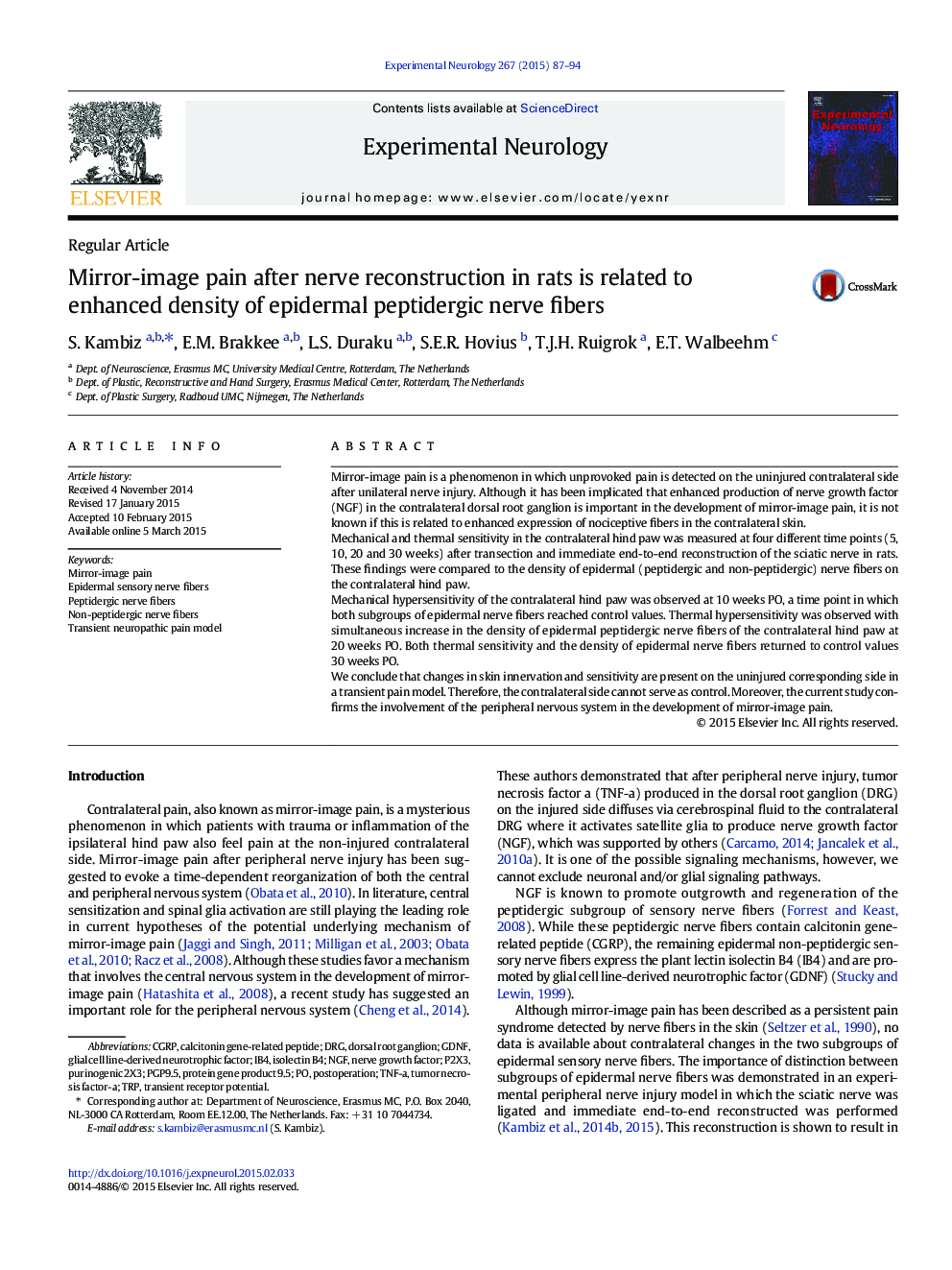| کد مقاله | کد نشریه | سال انتشار | مقاله انگلیسی | نسخه تمام متن |
|---|---|---|---|---|
| 6017787 | 1580166 | 2015 | 8 صفحه PDF | دانلود رایگان |
- Peripheral nervous system plays a role in the development of mirror-image pain.
- Transient mirror-image pain is observed following unilateral end-to-end reconstruction of the sciatic nerve in rats.
- Contralateral side cannot serve as control.
- There is potential relation between the epidermal peptidergic nerve fibers and thermal hypersensitivity.
Mirror-image pain is a phenomenon in which unprovoked pain is detected on the uninjured contralateral side after unilateral nerve injury. Although it has been implicated that enhanced production of nerve growth factor (NGF) in the contralateral dorsal root ganglion is important in the development of mirror-image pain, it is not known if this is related to enhanced expression of nociceptive fibers in the contralateral skin.Mechanical and thermal sensitivity in the contralateral hind paw was measured at four different time points (5, 10, 20 and 30Â weeks) after transection and immediate end-to-end reconstruction of the sciatic nerve in rats. These findings were compared to the density of epidermal (peptidergic and non-peptidergic) nerve fibers on the contralateral hind paw.Mechanical hypersensitivity of the contralateral hind paw was observed at 10Â weeks PO, a time point in which both subgroups of epidermal nerve fibers reached control values. Thermal hypersensitivity was observed with simultaneous increase in the density of epidermal peptidergic nerve fibers of the contralateral hind paw at 20Â weeks PO. Both thermal sensitivity and the density of epidermal nerve fibers returned to control values 30Â weeks PO.We conclude that changes in skin innervation and sensitivity are present on the uninjured corresponding side in a transient pain model. Therefore, the contralateral side cannot serve as control. Moreover, the current study confirms the involvement of the peripheral nervous system in the development of mirror-image pain.
Journal: Experimental Neurology - Volume 267, May 2015, Pages 87-94
